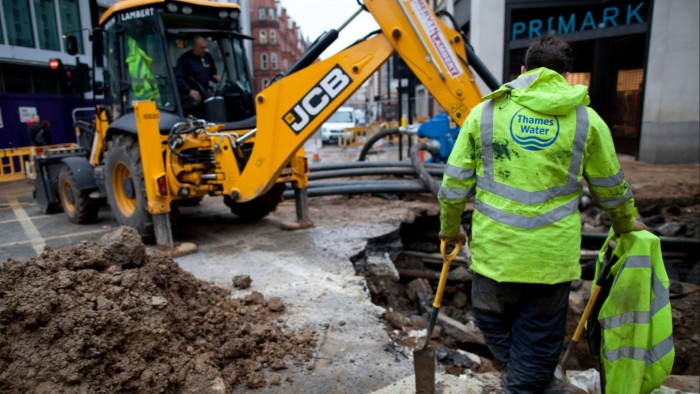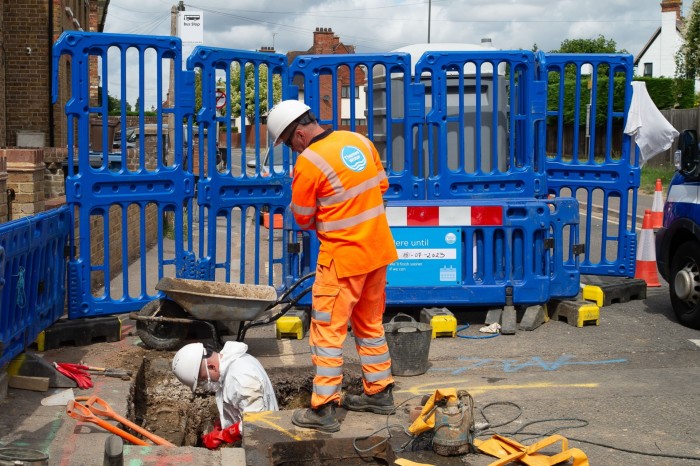Is public or private ownership better for water utilities?

Simply sign up to the Natural resources myFT Digest -- delivered directly to your inbox.
Londoners concerned with how to improve their water supplies should look to the developing world city of Phnom Penh. Back in 1993, 72 per cent of treated water in the Cambodian capital was lost by leaky pipes. Twelve years later, the leakage rate had fallen to 8 per cent and since then it has hovered at 6-8 per cent.
In wealthy London, by contrast, nearly 24 per cent of treated water is lost from leaks — a level just 5 percentage points lower than it was 30 years ago.
These contrasting fortunes raise questions as to why Phnom Penh, which has significantly less access to technology and capital, has managed to improve its water supply system more rapidly than the British capital.
“Water supply is not rocket science,” argues Professor Asit Biswas, an expert in water at Glasgow University and 2006 winner of the Stockholm Water Prize, an annual award for water-related achievements. “We have known what to do for decades. Sadly, all the British water utilities fall well short of good practices, let alone best practices. They could learn a lot from cities such as Phnom Penh.”
The English water utilities’ poor performance on leakage underscores a long-running debate over whether privatisation delivers better financial discipline and services than public sector ownership.
Although many countries have handed the management of water to private companies on long-term contracts of 10 to 25 years, England and Wales are the only countries to have fully privatised the infrastructure. Entire regional monopolies, and their pipe and sewage networks, were transferred to private companies 35 years ago, during Margaret Thatcher’s government.
However, while some people believe privatised water utilities will function better than public services, there is no evidence that this is always the case, says Biswas. Some of the worst water utilities are in the public sector but so, too, are the best: in cities such as Tokyo, Osaka, Singapore, Melbourne, Las Vegas — and Phnom Penh.
“Not a single privatised water utility comes even close to their performance,” says Biswas. “It really comes down to management, but you tend to pay more when it’s in the private sector.”
There are good reasons for the world-beating performance of some public sector utilities.
First, they can borrow money at lower interest rates than private companies because they receive state guarantees. Second, they do not have to pay shareholders and, as a consequence, can reinvest their profits in making improvements to the infrastructure.
In England, the privatised water companies have accumulated £68bn in debt and there are concerns over the financial stability of several, including the largest, Thames Water, which is struggling to meet its interest payments. Scottish Water, by contrast, remains in state hands, has very little debt, and is financially secure.

Many cities have found privatised water services lacking. Now, after several decades, the overall trend is towards “remunicipalisation”, or the return of water services to full public ownership and operation, says David Hall, visiting professor at the University of Greenwich.
Globally, 311 cities in 36 countries remunicipalised water services between 2000 and 2019, according to his research. Three countries accounted for the majority of cases: France with 109, the US with 71, and Spain with 38.
In some cases, Hall says, the benefits to customers have been almost instant. In Paris, water bills fell by 8 per cent after water services were taken back into public hands in 2011, he points out.
Most of the other large French cities that privatised water in the 1980s have followed suit in renationalising, including Lyon, Nice, Rennes and Grenoble. There are other examples throughout Europe, including Berlin.
Nevertheless, other countries and cities have been embracing water privatisation. Brazil’s Rio de Janeiro did so in 2021 while, in São Paulo, the water utility Sabesp is currently 50.3 per cent owned by the public sector and 49.7 per cent by shareholders.
Chris Gasson, owner of data provider Global Water Intelligence, defends privatised systems. “There are a few countries — like Germany and Japan — where public funding mechanisms for water work well, but then you have the opposite problem: over-investment,” he says. “You end up with gold-plated utilities and high costs. Privatisation, and the economic regulation that supports it, has in that sense protected water customers from water companies spending our money in stupid ways.”
In most of the world, he believes that political control of utilities leads to chronic under-investment. “Politicians don’t like upsetting voters with rate rises, and there are always other priorities for general taxation.”
Biswas acknowledges that water services tend to be better when they are treated as a priority by politicians. British prime ministers such as Boris Johnson and Rishi Sunak have not taken any sustained interest in water management or the utilities, he notes. In Singapore and China, by contrast, water is treated as a cabinet-level issue.
For example, the Chinese Water Ministry has just published a book on President Xi Jinping’s views on water over the past decade. “Not surprisingly, with such high political interest, water pollution in China has been significantly reduced since 2020,” says Biswas. “By 2030, all of China’s rivers are likely to be in a much better environmental state than [those] in England.”

Comments